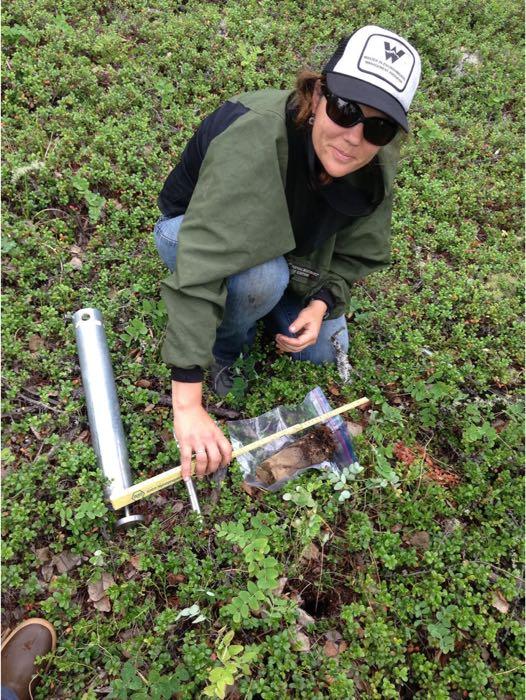Collecting Data
The meticulous collection of data is a critical component to any scientific inquiry. It is also potentially the most time consuming and logistically challenging element of any effective project. While the U.S. science team, as a whole, is examining boreal larch tree forests, each member of the group is conducting independent sampling related specifically to their area of expertise.
Dr. Heather Alexander collects data to measure carbon levels in boreal forests.
 Collecting data along a transect
Collecting data along a transect
Dr. Michael Loranty uses drone imagery to help identify spacial patterns on the landscape.
 Taking Drone Imagery
Taking Drone Imagery
Sarah Frankenberg collects seedling specimens, roots intact, to further analyze the symbiotic relationship between fungi and larch.
 Collecting larch seedings
Collecting larch seedings
Dr. Alison Paulson collects information on overall landscape vegetation to evaluate post fire regeneration trends. Additionally, Dr. Paulson measures depths of active layers of soil along transects, using a thaw depth probe.
 Measuring larch tree DBH (diameter at breast height)
Measuring larch tree DBH (diameter at breast height)
 Collecting data on vegetation
Collecting data on vegetation
Dr. Jennie DeMarco collects soil samples to further evaluate nutrient levels and soil composition.
 Collecting Soil Samples
Collecting Soil Samples
Seth Robinson measures seed predation on larch tree populations.
 Seed Predation Experiment
Seed Predation Experiment
Eric Borth cores larch tree specimens to gather data on age and conducts cone counts help determine when masting years are underway.
 Larch Cones
Larch Cones
 Larch Tree Core
Larch Tree Core
Dependent on landscape, data collection at any given site takes the team approximately three to five hours. Whether trudging through swampy floodplains, ripe with tussocks or bushwhacking amongst a jungle of thorny arctic rose, the team persists in collecting accurate and consistant data at every site.


Add new comment